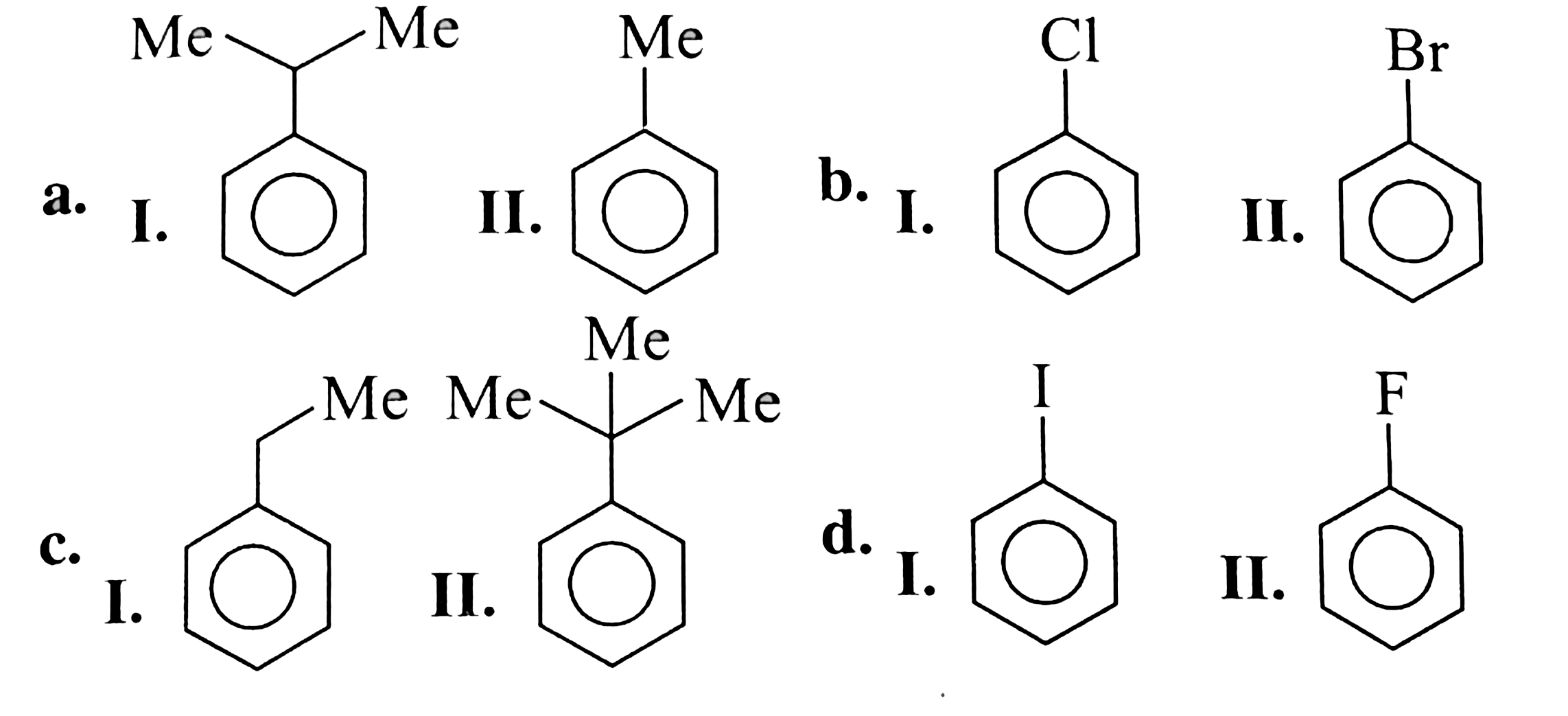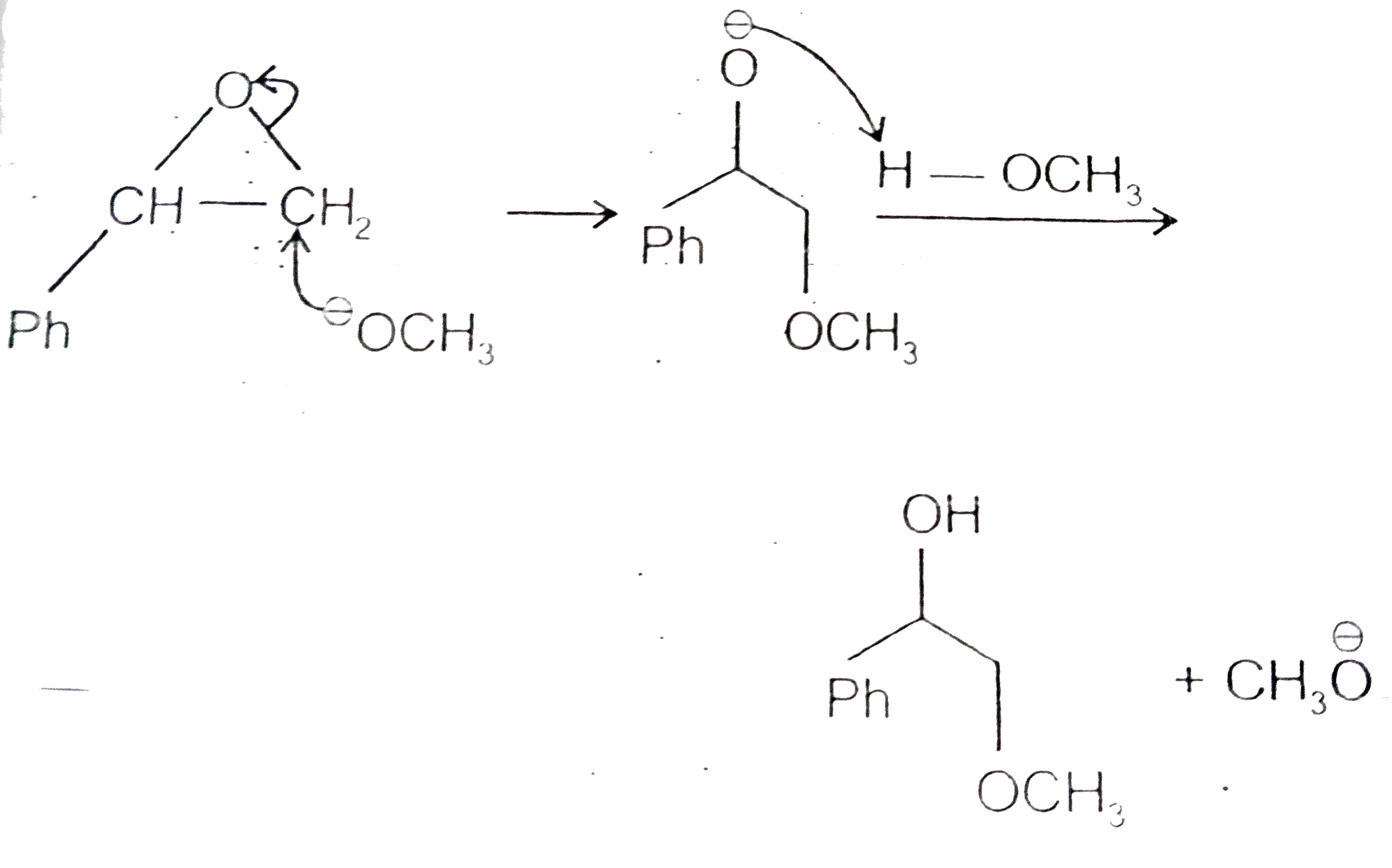In case of meta-attack on aniline (where −NH2 group is o−, p− directing) and in case of ortho-attack on nitrobenzene, resonating structures are possible. Which of them are more stable ?
_E01_264_Q01.png)
The correct Answer is:(I)
Step by step video & image solution for In case of meta-attack on aniline (where -NH_(2) group is o-, p- directing) and in case of ortho-attack on nitrobenzene, resonating structures are possible. Which of them are more stable ? by Chemistry experts to help you in doubts & scoring excellent marks in Class 12 exams.
Updated on:21/07/2023Topper's Solved these Questions
- ALKENE, ALKANE & ALKYNE BOOK - ALLENCHAPTER - ALKENE, ALKANE & ALKYNE EXERCISE - EXERCISE-4[B]
47 Videos
- ALKENE, ALKANE & ALKYNE BOOK - ALLENCHAPTER - ALKENE, ALKANE & ALKYNE EXERCISE - EXERCISE-5
58 Videos
- ALKENE, ALKANE & ALKYNE BOOK - ALLENCHAPTER - ALKENE, ALKANE & ALKYNE EXERCISE - EXERCISE-5(B)
66 Videos
- AIIMS 2019BOOK - ALLENCHAPTER - AIIMS 2019EXERCISE - CHEMISTRY
40 Videos
- ALKYL AND ARYL HALIDEBOOK - ALLENCHAPTER - ALKYL AND ARYL HALIDEEXERCISE - EXERCISE-05 (B)
35 Videos
Similar Questions
A third group is least likely to enter between two groups in the meta relationship. This is the result of steric hindrance and increases in importance with the size of the groups on the ring and with the size of the attacking species.
When a Meat-directing group is meta to an ortho-para directing group, the incoming group primarily goes ortho th the meta directing group rather than para.
Chlorination of m−chloro nitro benzene gives :
View SolutionA third group is least likely to enter between two groups in the meta relationship. This is the result of steric hindrance and increases in importance with the size of the groups on the ring and with the size of the attacking species.
When a Meat-directing group is meta to an ortho-para directing group, the incoming group primarily goes ortho th the meta directing group rather than para.
_E01_253_Q01.png)
View SolutionA third group is least likely to enter between two groups in the meta relationship. This is the result of steric hindrance and increases in importance with the size of the groups on the ring and with the size of the attacking species.
When a Meat-directing group is meta to an ortho-para directing group, the incoming group primarily goes ortho th the meta directing group rather than para.
_E01_255_Q01.png)
View SolutionAmong the following in which cases is the o/p ratio on nitration more the first compound?

View SolutionThe −NO2 group in an aromatic ring deactivates the ortho and para positions for an electrophilic attack. When −NO2 group is present at ortho or para positions of a leaving group (Nucleofuge) it activates the ring for nucleophilic attack. The reduction of −NO2 group by metal in acid causes its reduction to −NH2 group and then the ring becomes strongly activated for a electrophilic attack. The strong activation of −NH2 group is moderated by its acylation with CH3COCl to −NHAc group. Deacylation is carried out by hydrolysis with H3O+ or OH−. The ring alkylation by using RX/AlX3 is not possible in presence of −NO2 or −NH2 group but is possible in presence of −NHAc group.

The product (I) is :
View SolutionThe −NO2 group in an aromatic ring deactivates the ortho and para positions for an electrophilic attack. When −NO2 group is present at ortho or para positions of a leaving group (Nucleofuge) it activates the ring for nucleophilic attack. The reduction of −NO2 group by metal in acid causes its reduction to −NH2 group and then the ring becomes strongly activated for a electrophilic attack. The strong activation of −NH2 group is moderated by its acylation with CH3COCl to −NHAc group. Deacylation is carried out by hydrolysis with H3O+ or OH−. The ring alkylation by using RX/AlX3 is not possible in presence of −NO2 or −NH2 group but is possible in presence of −NHAc group.

The product (G) is :
View SolutionThe −NO2 group in an aromatic ring deactivates the ortho and para positions for an electrophilic attack. When −NO2 group is present at ortho or para positions of a leaving group (Nucleofuge) it activates the ring for nucleophilic attack. The reduction of −NO2 group by metal in acid causes its reduction to −NH2 group and then the ring becomes strongly activated for a electrophilic attack. The strong activation of −NH2 group is moderated by its acylation with CH3COCl to −NHAc group. Deacylation is carried out by hydrolysis with H3O+ or OH−. The ring alkylation by using RX/AlX3 is not possible in presence of −NO2 or −NH2 group but is possible in presence of −NHAc group.

The product (H) is :
View SolutionAttack by a strong nucleophile such as CH3OΘ (Methoxide ion ) on an epoxide occurs at the least hindered carbon similar to an SN2 reaction

Attack by a weak nucleophile such as MeOH . Can occur only when the epoxide has been protonated so that a better leaving group is formed under acidic condition weak nucleophile attacks more substituted carbon to give final product .
Which statement is true about base ring opening reaction of epoxide ?
View SolutionIt is not always easy to predict the position of attack on multiply substituted benzene. If the benzene ring bears different ortho//para directing group at the 1 and 4 positions, the position of further substitution is not immediately clear. Sometimes steric effects determine the outcome. In other cases, electronic factors determine the outcome, and further reaction will be at the position activated by the more strongly activating group.
Some substituens are so strongly activating that no catalyst is needed, and it is often diffcult to stop substitution after mono substituion. Mild condition are needed to restrict the reaction to mono-substitution.
It is possible to reduce the activity such groups by side chain reaction so that the reaction can be stopped use can sometimes be made of removable blocking groups on the ring.
Which of the following synthesis could be done in the ring step ?
View SolutionThe origin of acidity and basicity in organic compound is great interest and provides an extensive comparison. Among hydrocarbons % a character is taken in aC Count while to decide the acidity, in simple aliphatic acids, more the number of alkyl groups, (+1 effect) less is the acidity & more the (-1 effect) groups larger the acidity and vice-versa in the case of simple alphatic bases. Benzoic acid is more stronger than carboxylic acid as benzoate ion is stablised more by resonance. Aromatic amines are less basic than apiphatic amine as the electron pair is less available in case of aromatic amines. The presence of solvent also plays a very important role and at time governs the order too.
Which of the following orders regarding acid strength is correct ?
View Solution
